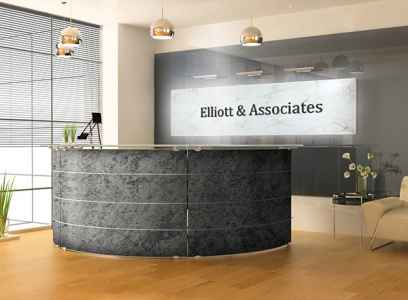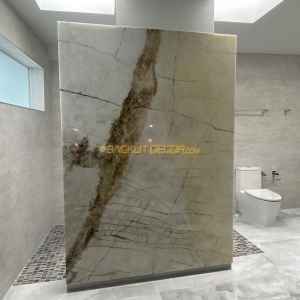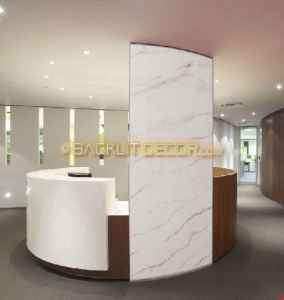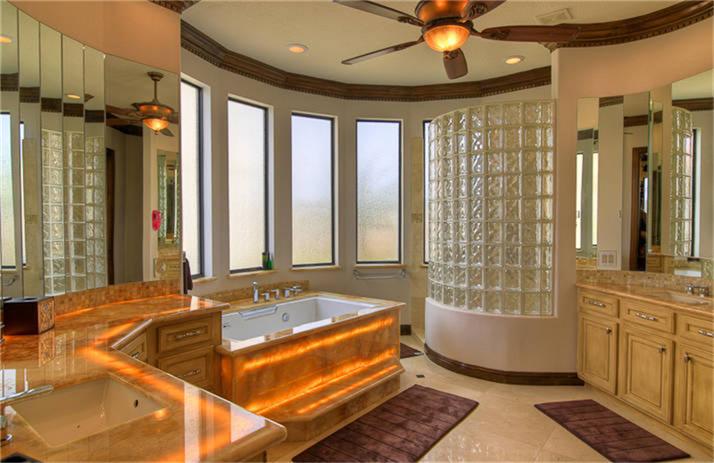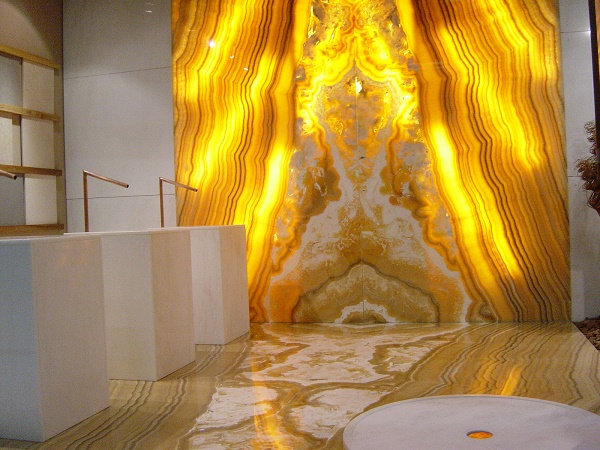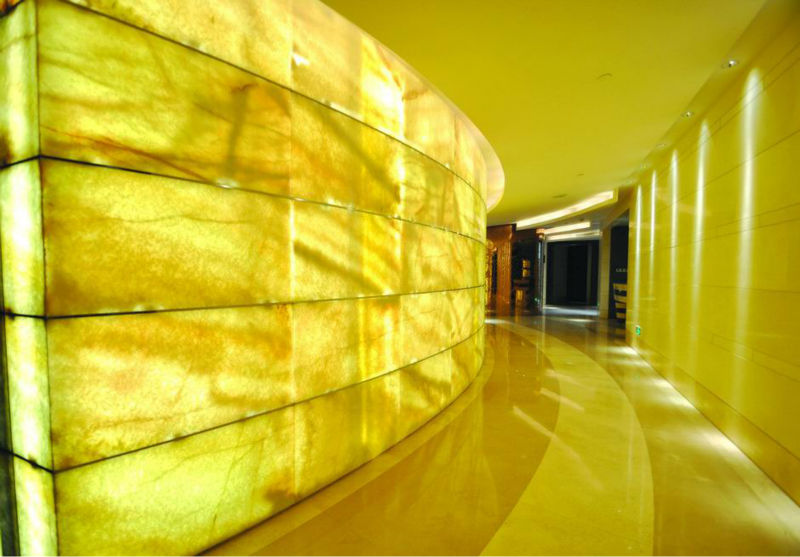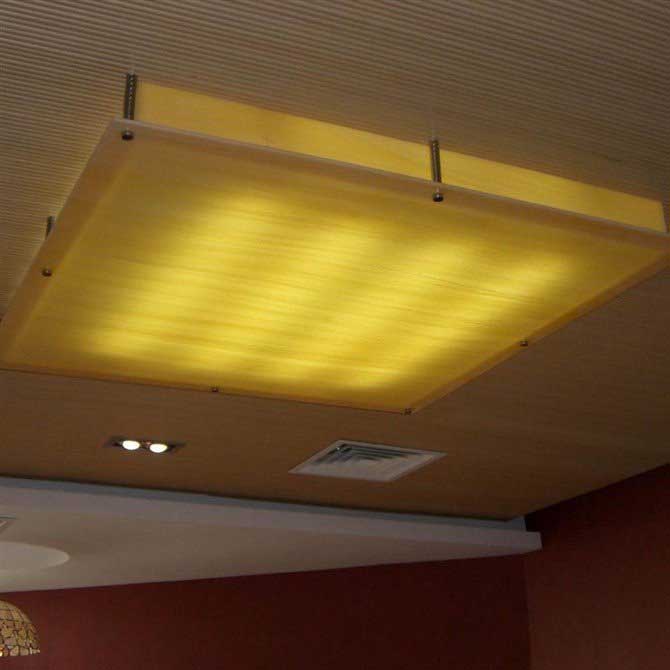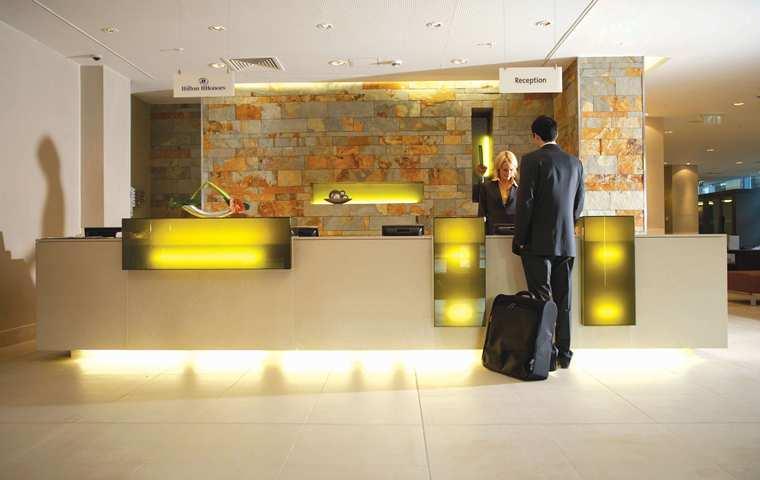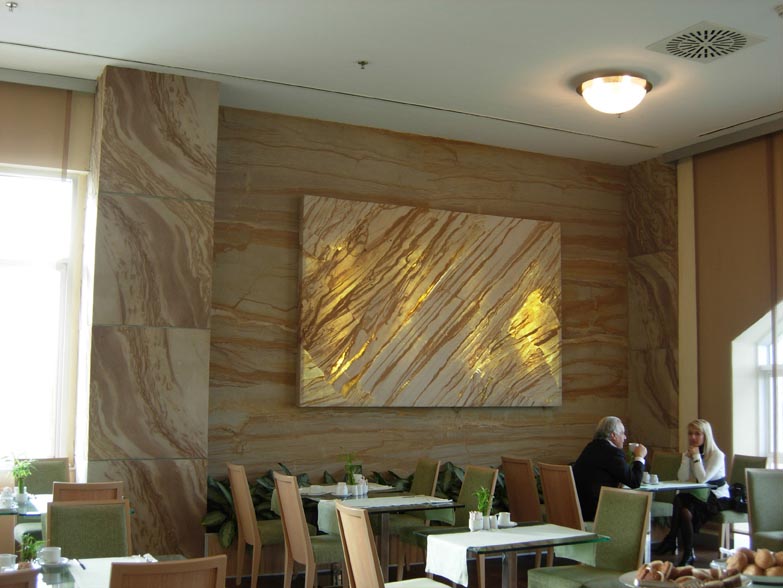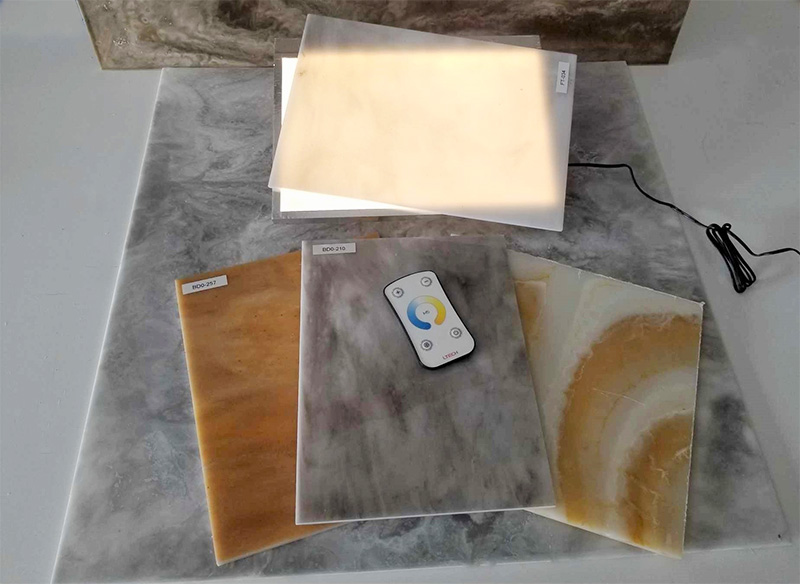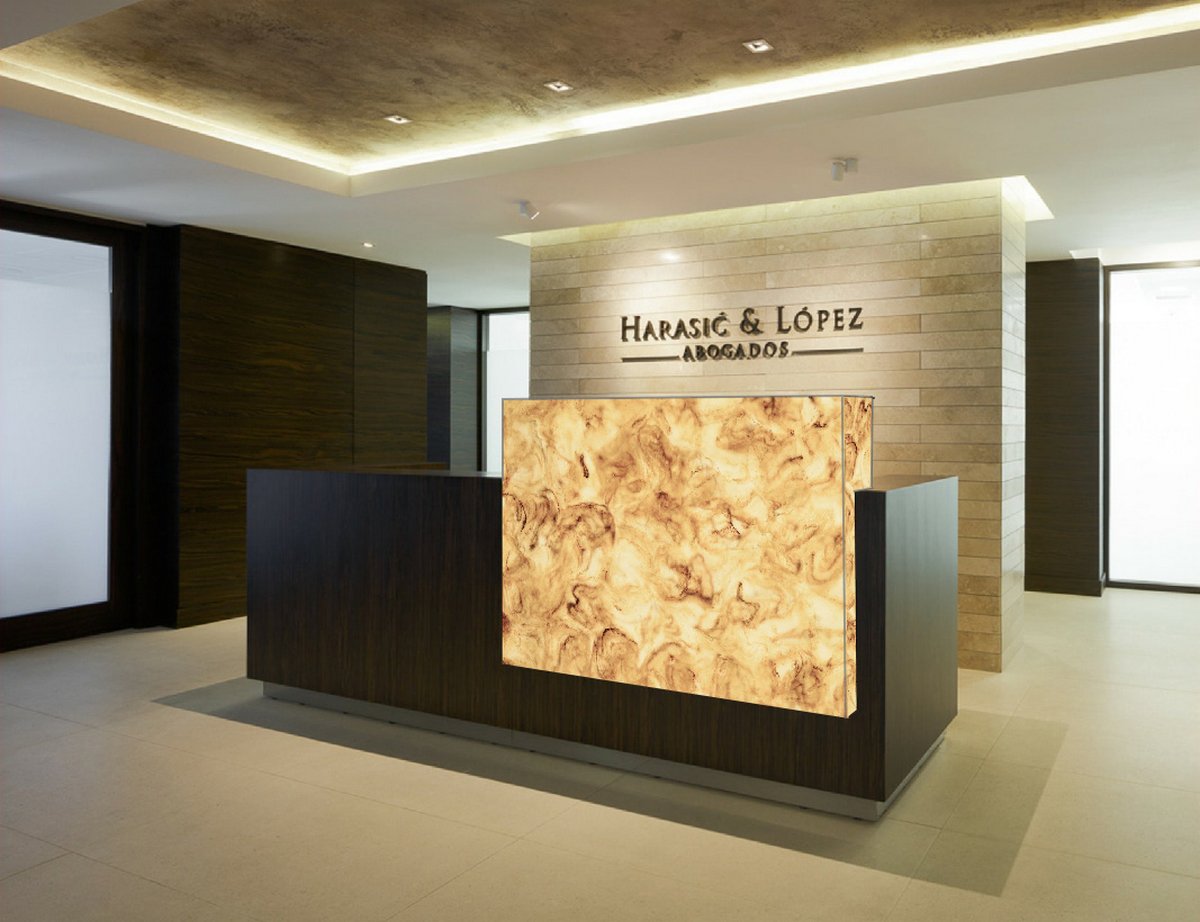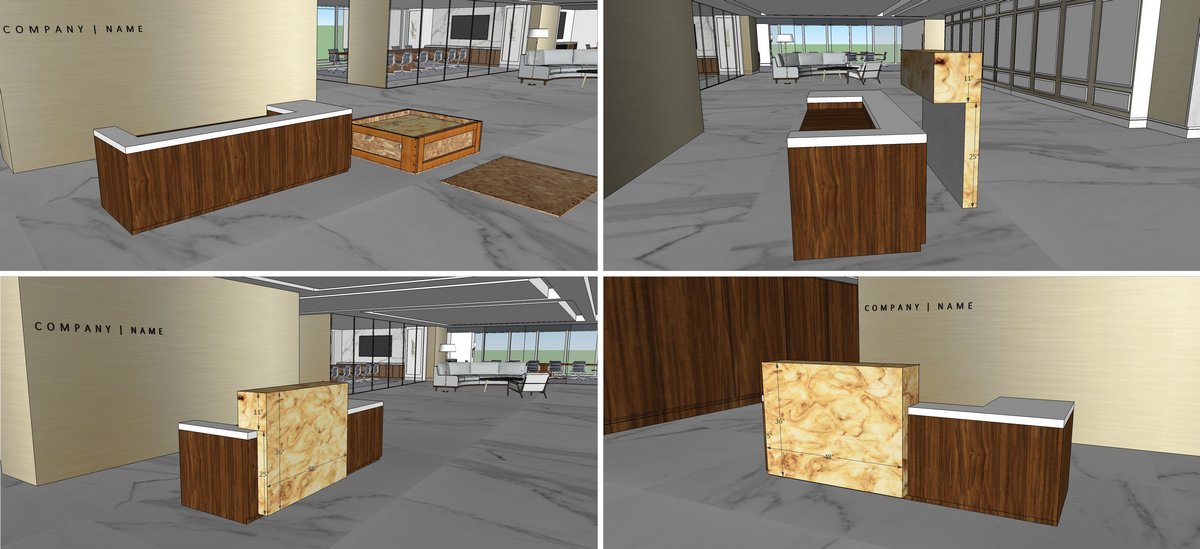Frequently asked Questions
General Questions
How difficult is it to install your products?
What makes your products different from others?
How does weight affect a project?
How does your material compare in terms of weight?
Can you produce 3-dimensional (spherical) objects?
Can your products be used outdoors?
Can you fabricate backlighting for shower stalls?
How impact resistant are your products?
What is the largest size project you can produce?
Can you produce seamless applications?
What do you mean by stone inlays?
Do you provide detail drawings for Architects?
If damaged, can your products be repaired?
How do your products compare to Onyx?
Can you help in the design and development stages of a project?
Lighting
What light source is best for what project?
Can light colors be changed?
What are the warranty aspects of light source elements?
How can light source elements be changed?
What are the space requirements for backlit items?
Payment and Shipping
How can I make sure I get what I bargained for?
How do you ship?
Do you provide free estimates?
How difficult is it to install your products?
Short answer: Straight forward and not at all difficult. More: Our products are designed to keep installation time to a minimum. Due to the relatively light weight no special supports are necessary. We make sure that shipments contain ALL parts necessary to complete a project successfully. Panels are complete and do not require any assembly. All parts, meaning finished surfaces, coated metal containers holding the LED's, and all mechanical and electronic parts necessary to install the unit(s) plug them in or hard wire and turn on the lights. That also includes all installation hardware plus special tools if so necessary. Detailed installation instruction will be part of every shipment.
Back to Top
What makes your products different from others?
Short answer: Our panels are complete, no assembly required. More: When designing a project we gladly advise on how to go about handling issues like substructure, attachment, power requirements, affect of ambient lighting and lumen requirements of backlighting, etc. Our panels can be disassembled for maintenance. Others often glue surfaces to LED lighting pads, which makes future maintenance impossible. If this is the case and lighting fails there is NO way of repair.
Back to Top
How does weight affect a project?
Most comparable projects using slab materials like Onyx, crystalline products or certain laminates have to deal with substantial weight issues. Creating support structures, handling and shipping heavy materials and installation will increase the total project cost substantially. Let alone the potential for damage even before installation. On the contrary, our material is light weight, so no special engineering or support structure is needed.
Back to Top
How does your material compare in terms of weight?
A 10 x 4' 3/4" thick Onyx slab may weigh in excess of 700 lbs. That does not include support grid, heavy duty fasteners and lighting containers. A complete 4 x 8' panel including alu can lighting and electronics in any of our SyntecTM Marble or SyntecTM Onyx weights approx. 130 lbs. as opposed to a 4 x 8' sheet of RSV applied to 1/8" thick Acrylic backing with approx. 60 lbs
Back to Top
Can you produce 3-dimensional (spherical) objects?
Only our Real Stone Veneer Product is flexible enough, that it can be wrapped around any shape, spherical or otherwise. Availability of odd shaped carrier materials (PVC, Poly carbonate or Acrylic) can at times pose a challenge. The process is very laborious thus time consuming and expensive.
Back to Top
Can your products be used outdoors?
Yes, but only our Real Stone Veneer and Thin Slate products.
Back to Top
Can you fabricate backlighting for shower stalls?
Short answer: Yes. More: We recommend using backlit features only on walls without plumbing fixtures though, as they might get in the way of the light source. Besides, future maintenance will be a nightmare. Most light sources can be dimmed, so backlit material in a shower will provide awesome effects. The only problem: the water bill may be increasing as people don't want to leave the shower!
Back to Top
How impact resistant are your products?
This depends solely on the carrier material. In case of 1/4" Acrylic backing a good hit with a hammer will do to knock a hole in it. The thicker the substrate or depending on the type of substrate i.e. lami glass, impact resistance can be improved. It surely can be engineered itno a product.
Back to Top
What is the largest size project you can produce?
There is no limitation. As long as the material can fit in containers. .
Back to Top
Can you produce seamless applications?
Short answer: No, More:. Refraction being the issue, which is the breaking of light at the edge of a panel will dreate the appearance of seams. The extent of these seams depend largely on the type and color of the surface material. General rule, the darker the material the less vissible seams. Also worth noting: seams sometimes can be used to enhance the looks, i.e. incorporate designs like book match. Additionally we can use coloring, striations and all, across panels to make seams less visible.
Back to Top
Do you provide detail drawings for Architects?
We have a number of schematics available for Architects and Designers. However, detailed shop drawings will only supplied upon a project order.
Back to Top
If damaged, can your products be repaired?
It depends. Yes, if we're talking about scratches. They can be buffed out.
Back to Top
How do your products compare to Onyx?
As there is a long list of items, we have compiled a comparison here
Back to Top
Can you help in the design and development stages of a project?
Absolutely! Actually we advise Designers and Architects all the time to involve us as early as possible - even put us in touch with the end user - so we can collect as much information on a project to make it another "head turner". This is particularly important as many Professionals are not quite familiar with our material just yet.
Back to Top
What light source is best for what project?
In principle, the exposure time is what we consider. If a backlit stone feature is suppposed to be viewed mostly at night hours, less intensive lighting is required. Daylight exposure will require more powerful backlighting. In many cases dimmers can be used to adjust the intensity.
Back to Top
Can light colors be changed?
Thanks to RGB and variable white LED's the colors of lighting and thus the appearance of the stone surface can be changed to a host of different colors. As tastes are very different regarding this issue it is worth pointing out that the most popular stone colors used with RGB applications are White and Yellow thus appearing like white or yellow Onyx. The red's green's blue's are probably more suitable for Bar and Nightclub applications. Either way, the colors can be changed by means of a 40+ button remote control allowing all kinds of different effects and programming on both types of LED's.
Back to Top
What are the warranty aspects of light source elements?
Depending on the location of a backlit feature changing out light source elements can be very expensive. As we are not manufacturing any lighting elements, we and our customers have to rely on respective manufacturer's warranties. We are testing lighting elements constantly for a number of issues but please consider that promises of manufacturers regarding life expectancy are impossible to test. Their standard promise of up to 50 000 hrs. means that If the light is used for 10 hours a day, this test would take 13.7 yrs. The other caution of course is always the "up to" phrase which by definition could be only one hour. Best practice is to plan ahead and make sure that the change of lighting elements is not going to be a major challenge as it is with many Onyx applications.
Back to Top
How can light source elements be changed?
This again depends on the individual application, however we will engineer the product considering the need for replacement. This can be achieved by selecting certain types of lighting elements to wiring procedures, technical additions and creating easy to reach access points. Our panels can be disassembled.
Back to Top
What are the space requirements for backlit items?
Space requirement meaning the space behind the stone veneer/ Acrylic laminate. We strive to achievere uniform and constant backlighting in order to get maximum impact. Therefore we recommend a minimum of 5 inches in case of fluorescent lighting, a minimum of 2.5 inches for LED's and 1 inch for LED panels. Note: The latter will be the hardest one to change out as most of them are custom fabricated for a specific size.
Back to Top
How can I make sure I get what I bargained for?
We always will treat communication as one of the most important issues and keep clients informed about the progress of projects. When projects are completed we will send images and/ or vidoes to the client as proof of working product. Only upon receipt of these images is the client required to facilitate the final payment. Note: Our warehouse will not release shipments prior to receipt of the final payment
Back to Top
How do you ship?
Smaller packages ship with UPS, larger ones with commercial carriers like ABF, XPO, OD or R&L. Note: At time of quoting a project we do not have all required shipment data like weights and dimensions so the shipment cost in quotes will be an estimate. Proper shipping cost will be adjusted in the final invoice.
Back to Top
Do you provide free estimates?
Estimates are free of charge as long as we receive all pertinent information. You can fax, email or snailmail. If we are required to go on location for planning, engineering, advice, etc. appropriate charges will be applied.
Back to Top


